Huawei Pioneer suddenly planned to launch the Mate 60 Pro for sale, while Apple also introduced the new iPhone 15 series. With the contestants for the 2023 flagship championship now in place, this grand occasion is a rarity in the aviation industry. However, amidst the excitement, many users are asking: which one should I buy between the Huawei Mate 60 series and the iPhone 15 series? Today, we will compare the backbone models of these two new product series: the Pro version.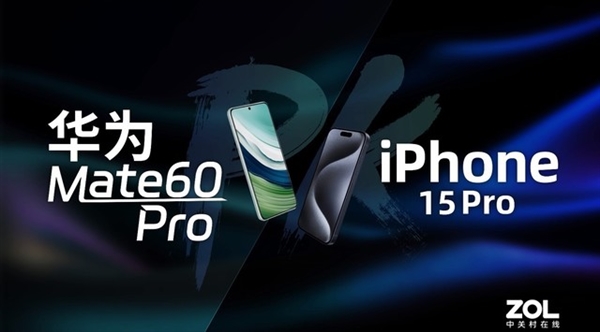
As the large-sized product among the classic models of medium-cup, large-cup, and extra-large-cup models, the Pro version of each flagship mobile phone not only represents its understanding of the needs of mainstream user groups but also reflects the integration of its own technological abilities.
In this comparison, we will assess the Huawei Mate60 Pro and the iPhone 15 Pro. The former represents Huawei’s latest domestic self-developed breakthrough in various technologies, and its industrial design is also quite outstanding. The latter employs the current advanced chip manufacturing process and is the first mobile phone product to feature mass-produced titanium alloy frames. Therefore, these two models are undoubtedly the pinnacle of current flagship mobile phones. However, there are notable differences between them in terms of configuration and user experience.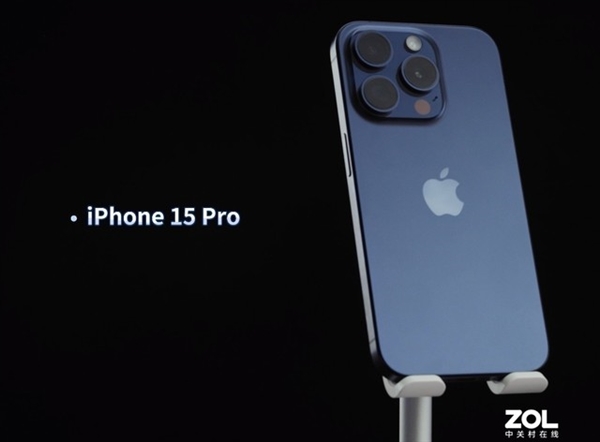
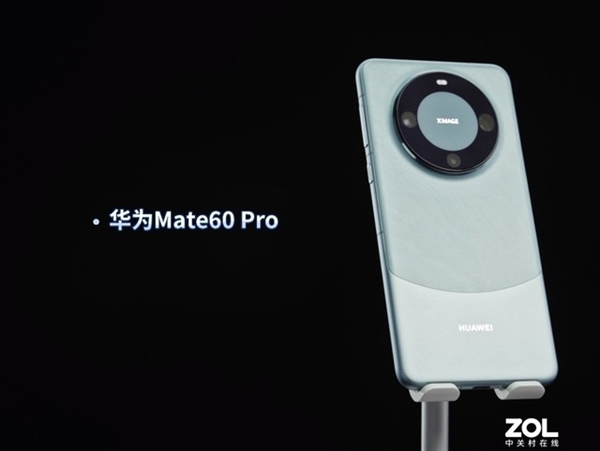
Let’s start with the appearance. When comparing these two models, the most noticeable difference lies in their design styles. The back of the Huawei Mate60 Pro boasts a breakthrough “concentric” design, and the iconic “star ring” design of the Huawei Mate series extends beyond the camera itself, creating an elegant arc on the back cover that symbolizes breakthrough and innovation.
We have the Yachuan Green color scheme for the Huawei Mate60 Pro. The device utilizes an ultra-reliable Xuanwu architecture, incorporating ultra-fall-resistant second-generation Kunlun glass, an ultra-tough Xuanwu body, and ultra-durable brocade fiber material to provide comprehensive protection.
The iPhone 15 Pro, on the other hand, adheres to the classic design language of the iPhone series. The rear camera module is positioned in the upper left corner of the back, and the back features a matte-textured glass backboard material. The frame is made of aviation-grade titanium, and the curved edge design connecting the front screen and the frame offers a more comfortable grip.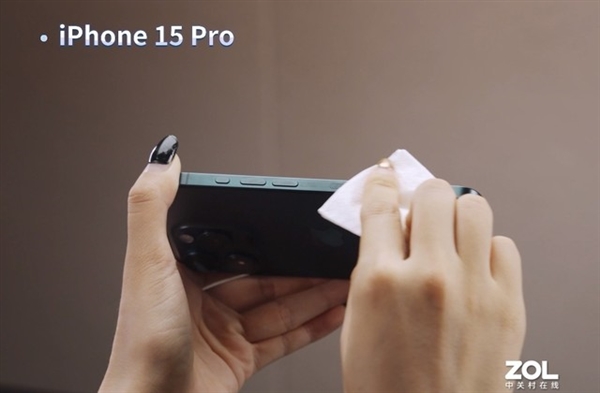
After hands-on testing, we discovered that the Huawei Mate60 Pro with its curved frame offers a better grip compared to the iPhone 15 Pro, which only employs a curved edge design on the screen. Moreover, the aluminum body frame of the Huawei Mate60 Pro is less prone to fingerprint smudges compared to the titanium alloy frame of the iPhone 15 Pro, especially in the blue version we received, which is more susceptible to fingerprints and can be somewhat inconvenient for daily use.
In terms of the front screen, the Huawei Mate60 Pro features a four-curved screen design with equal depth on all four sides, balancing the holding feel and screen display effect. Additionally, the screen is protected by second-generation Kunlun glass.
The front screen of the iPhone 15 Pro has benefited from process upgrades, reducing the black edges between the frame and the screen while still using a super ceramic crystal panel for coverage and protection.
Now, let’s address the signal issue that everyone is concerned about. Huawei’s Mate series of mobile phones are well-known for their signal performance, while iPhones have their own reputation. We conducted a network speed test in an underground garage under China Unicom’s 5G network environment. The measured download rate for the Huawei Mate 60 Pro was 29.3Mbps, with an upload rate of 1.12 Mbps, showcasing its superior performance compared to the iPhone 15 Pro, which had a measured download rate of 17.2Mbps and an upload rate of 0.83Mbps.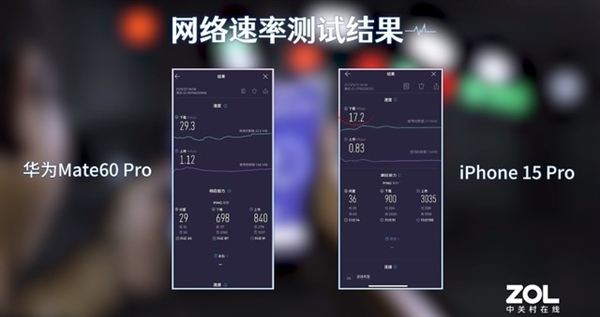
In addition to traditional cellular network communication capabilities, satellite communication capabilities are also important for modern smartphones. Huawei Mate 60 Pro supports the Tiantong satellite phone function in China, while the iPhone 15 Pro supports satellite messaging, albeit not available in China.
We also tested the satellite phone function of the Huawei Mate 60 Pro, which requires installing a telecom SIM card and activating China Telecom’s Tiantong satellite package. With this setup, satellite calls can be made.
Imaging is a crucial aspect for flagship mobile phones, and both the iPhone 15 Pro and Huawei Mate 60 Pro, being pro-level models, offer excellent imaging configurations. However, for today’s discussion, we will focus on actual imaging performance rather than technical specifications.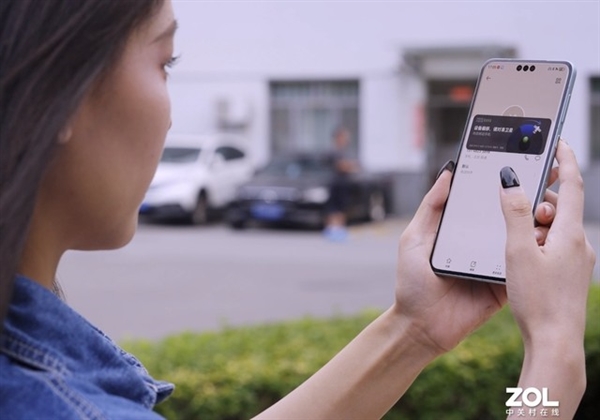
Starting with the main camera comparison, we captured samples in various scenes using both phones. The imaging performance of both models is impressive. The iPhone 15 Pro delivers a natural but slightly muted imaging style, while the Huawei Mate 60 Pro’s images exhibit distinctive characteristics, thanks to Huawei’s XMAGE tone, which is more visually appealing.
Additionally, due to its F1.4 large aperture and Huawei’s extensive experience in night scene algorithms, the Mate 60 Pro excels in night scene imaging compared to the iPhone 15 Pro.
The main camera of the Huawei Mate 60 Pro also supports a ten-stop variable aperture adjustment and a professional mode, giving users more control over their photography, especially for portraits and still life. This experience aligns well with professional photographers’ habits.
In contrast, the iPhone 15 Pro supports recording depth information for post-processing focus adjustments but has a smaller aperture of F1.78 and lacks a dedicated professional photography mode, limiting its suitability for professional photographers’ portrait shooting needs.
Furthermore, the comparison reveals that the portrait photos taken by the main camera of the Huawei Mate 60 Pro are clearer and more natural, while the iPhone 15 Pro, while clear, exhibits some sharpening effects.
In the ultra-wide-angle lens category, both models perform exceptionally well, but the Huawei Mate 60 Pro, with its Huawei XMAGE tone, delivers even more stunning results.
When it comes to telephoto lens comparison, the Huawei Mate 60 Pro boasts a 48-megapixel super macro telephoto lens with a 95mm focal length, 3.5x optical zoom, and 100x digital zoom. In contrast, the iPhone 15 Pro features a 12-megapixel upright telephoto lens with a 77mm focal length, supporting 3x optical zoom and 15x digital zoom. Consequently, the comparison samples exhibit notable differences in image quality.
In daytime performance, although the imaging performance of both models seems similar at first glance, closer inspection reveals that the Mate 60 Pro, with its 48-megapixel sensor, delivers better imaging clarity. Moreover, the Mate 60 Pro’s telephoto and macro functions offer a more creative shooting experience.
We also conducted separate tests on charging and battery life. The Huawei Mate 60 Pro, using the original Huawei 88W super-fast charger, can reach 98% battery capacity in just 30 minutes.
In contrast, the iPhone 15 Pro, with a combination of 65W PD fast charging and the original charging cable, achieves up to 27W fast charging and can charge up to 61% of the battery in 30 minutes. It’s evident that the Huawei Mate 60 Pro leads in the charging comparison. We also tested the battery life performance of both phones under a 5-hour heavy usage scenario.
In summary, the iPhone 15 Pro and Huawei Mate60 Pro, as flagship phones of this year, offer outstanding user experiences. However, through our comparison, it’s evident that the Huawei Mate60 Pro places a greater emphasis on actual
Read Also: Bakeey X20 Wristband Review: Banggood Sales at $11.68









